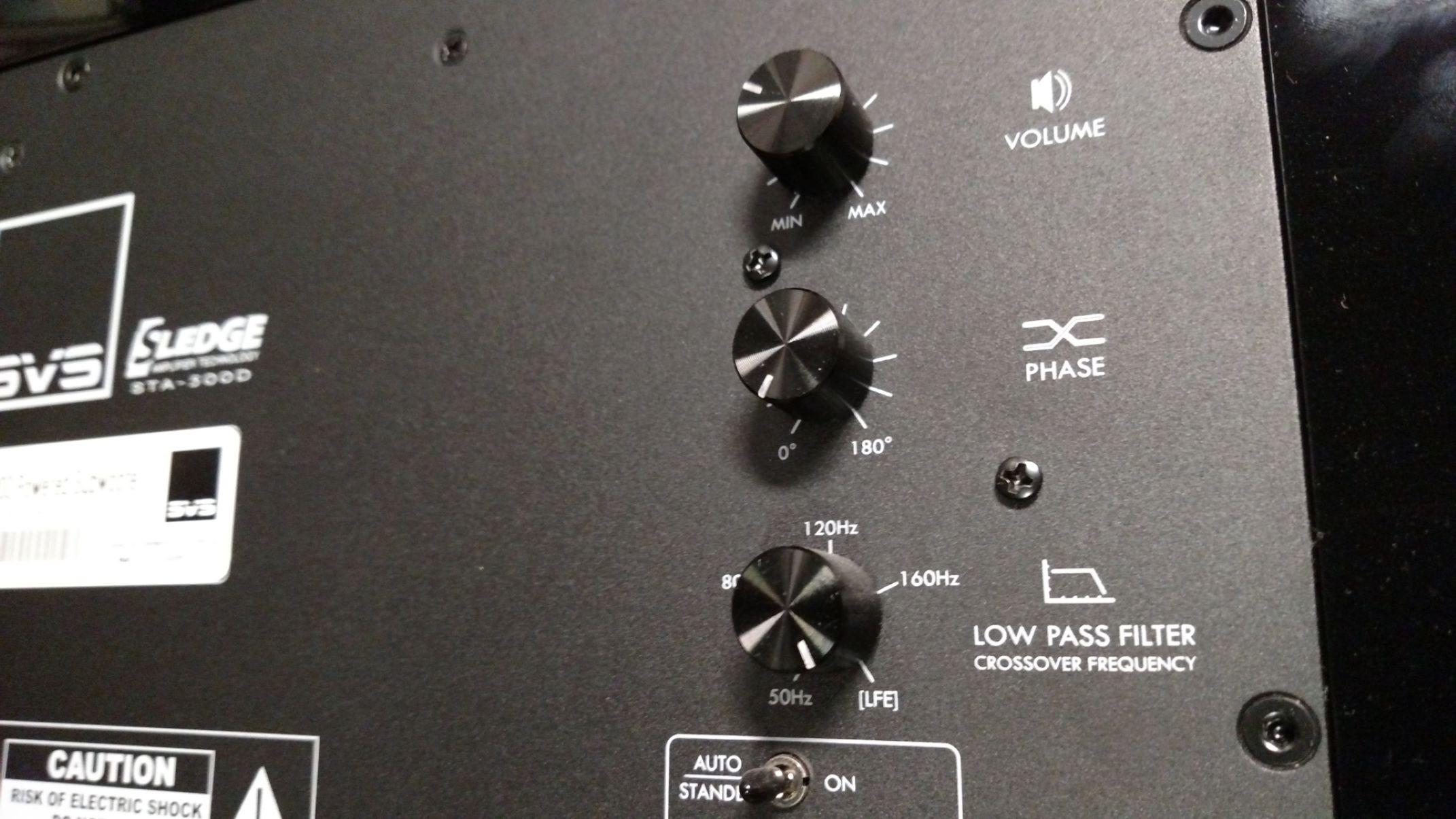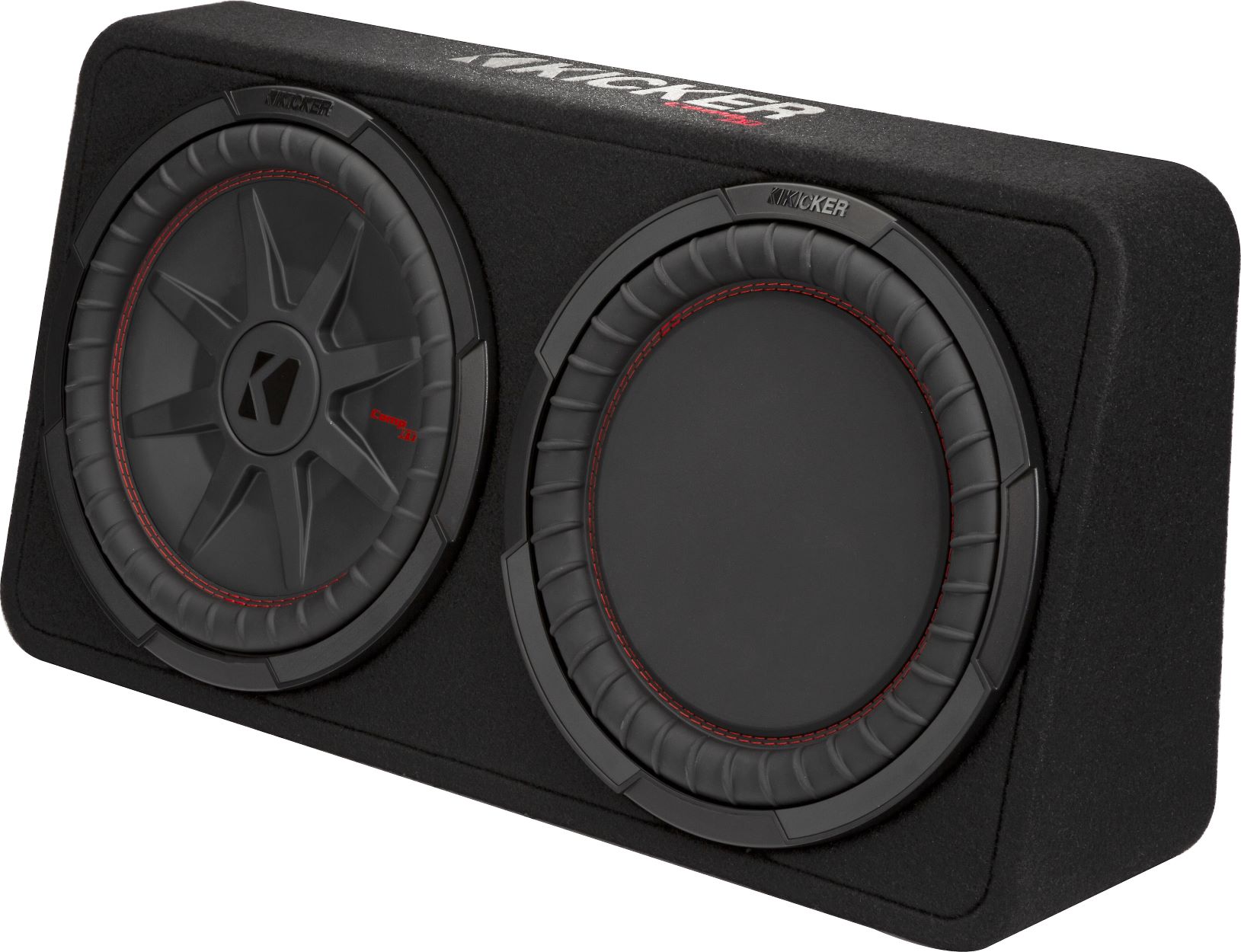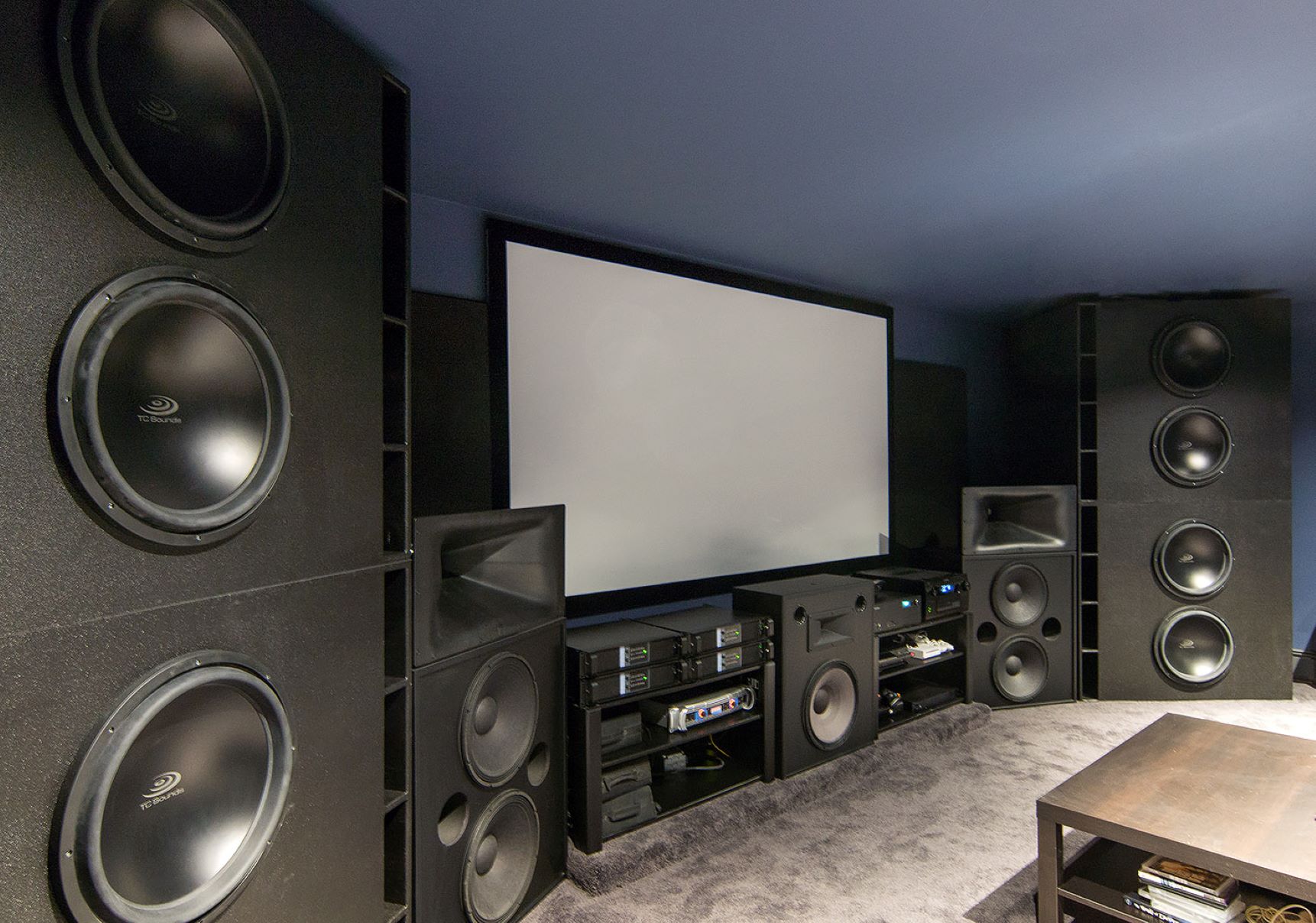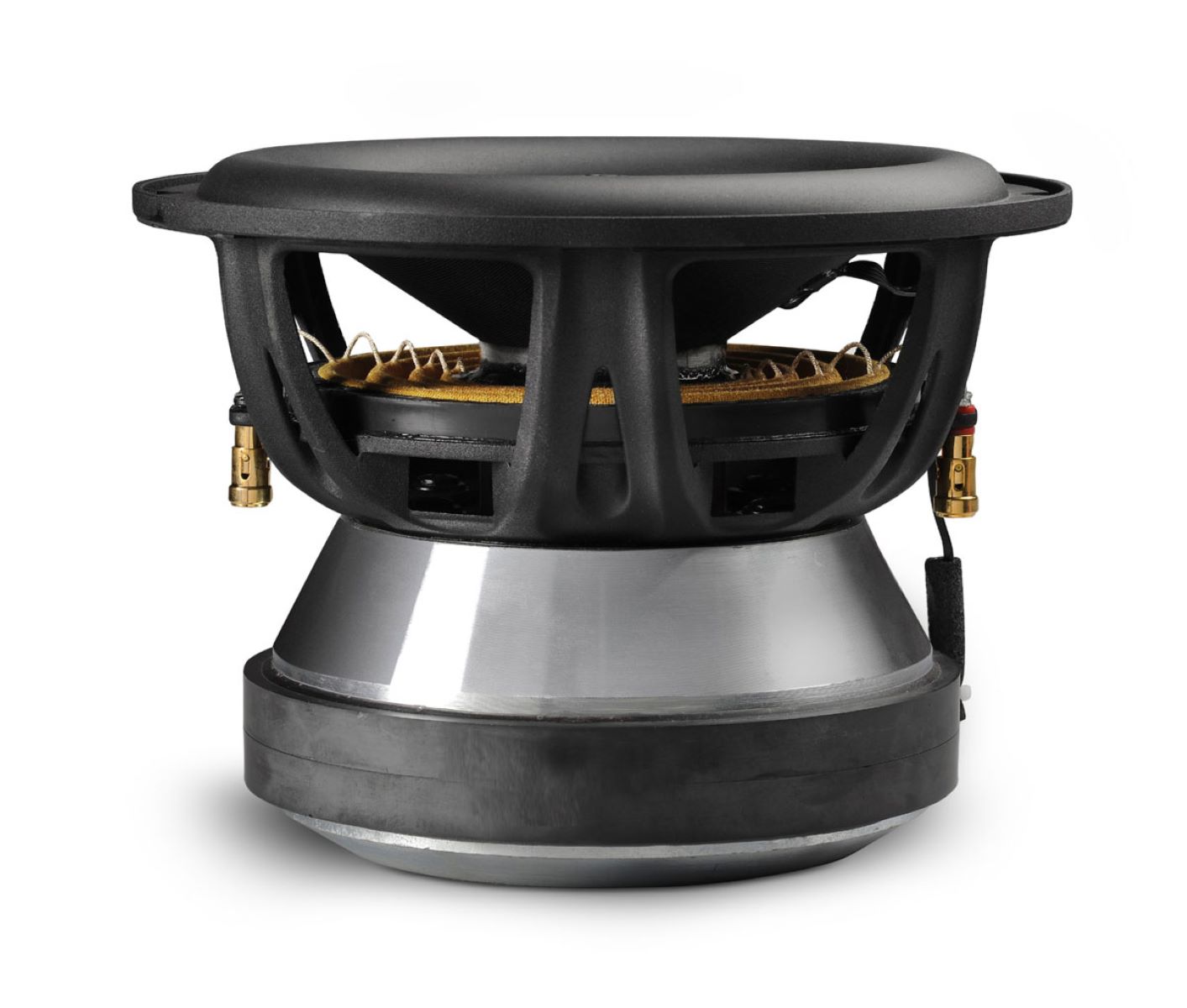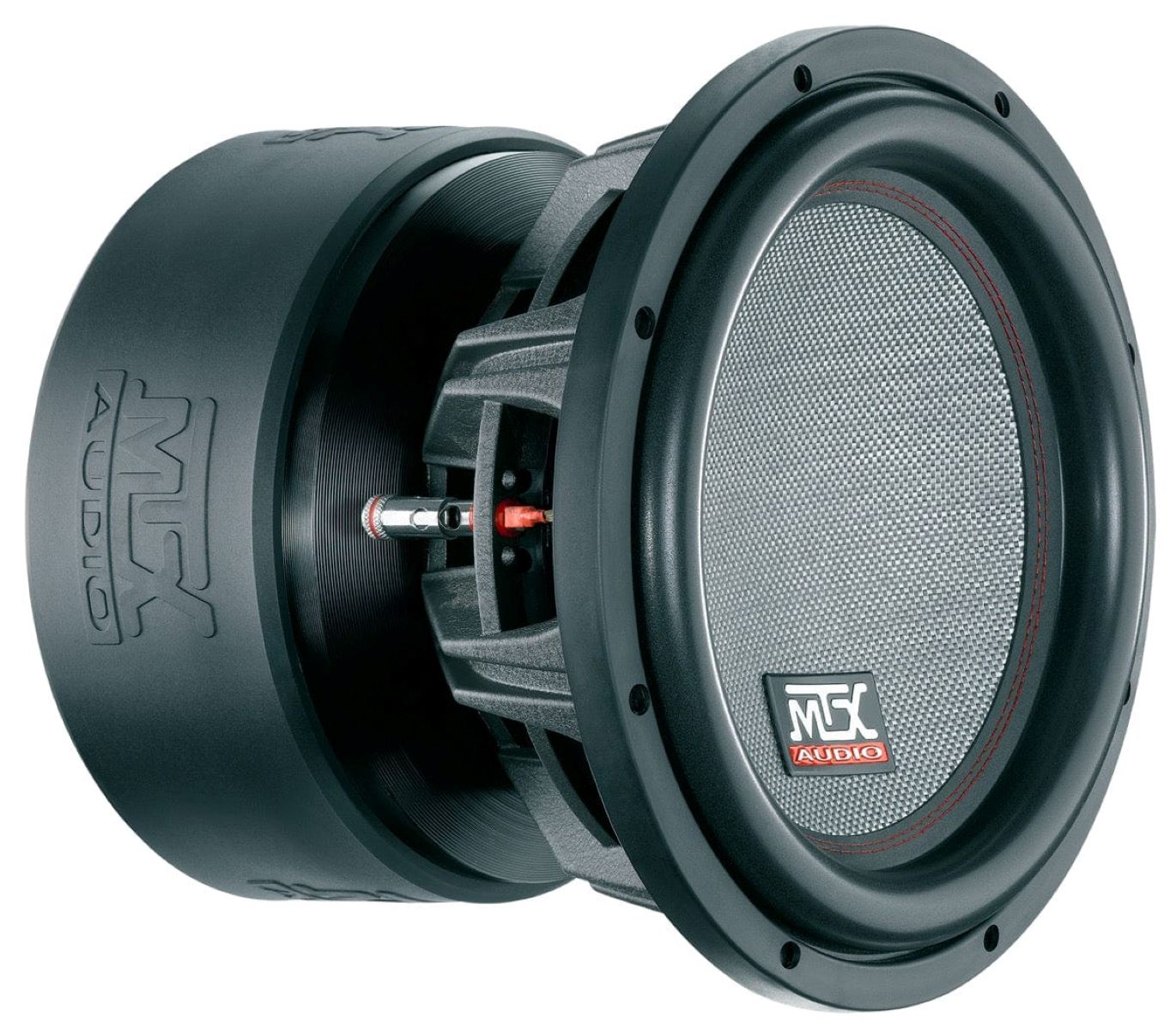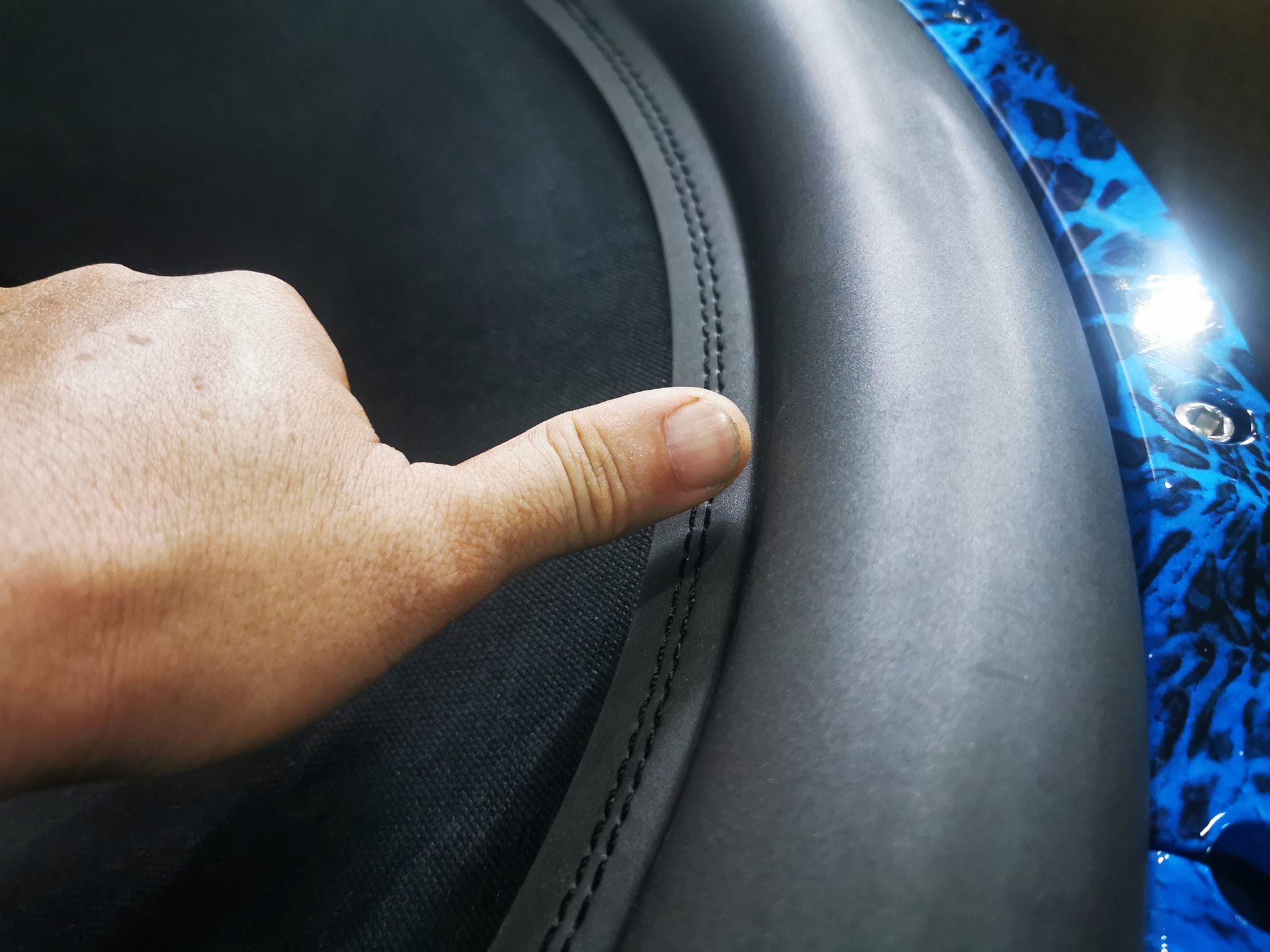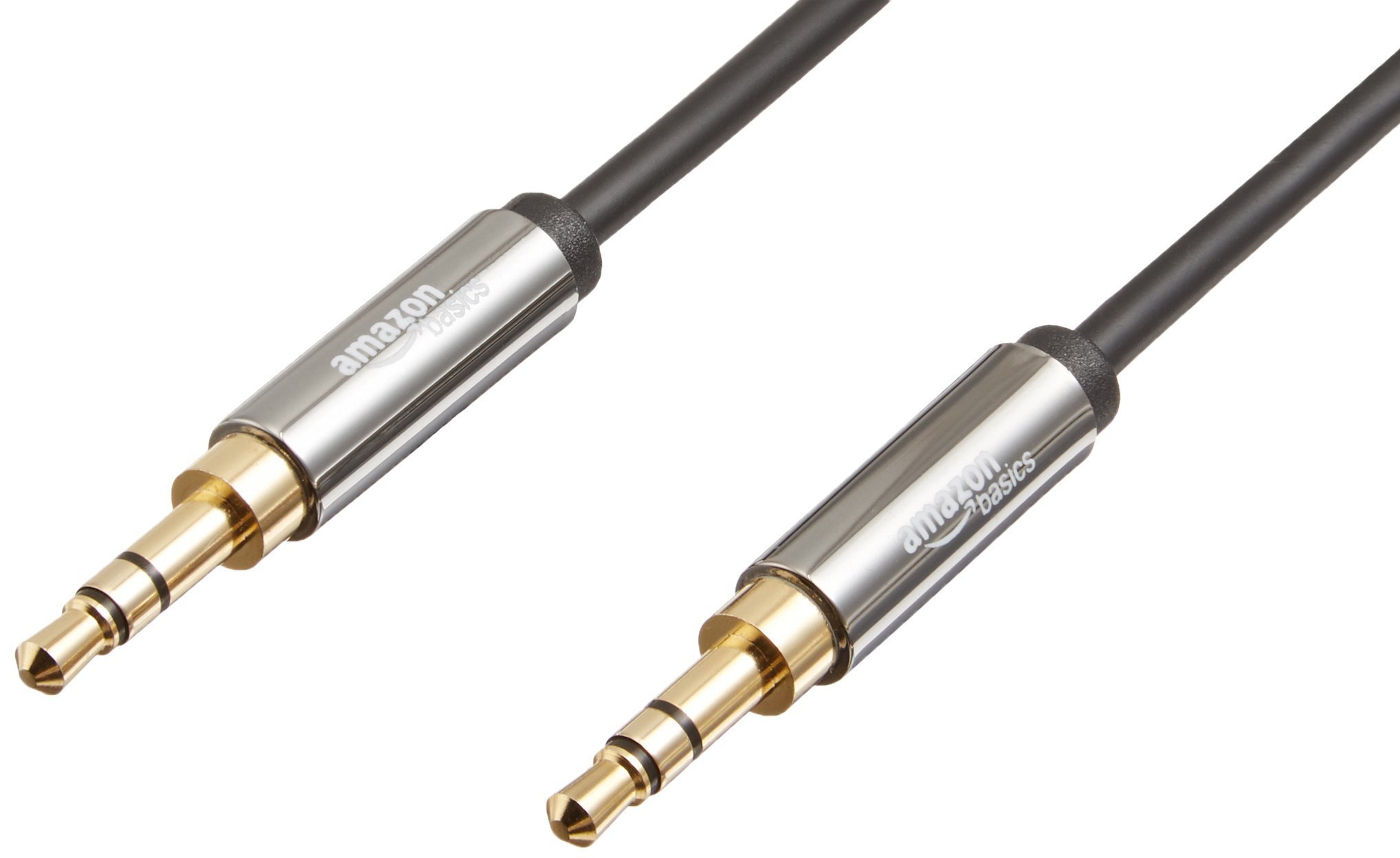Home>Devices & Equipment>Subwoofer>What Is A Subwoofer Cable
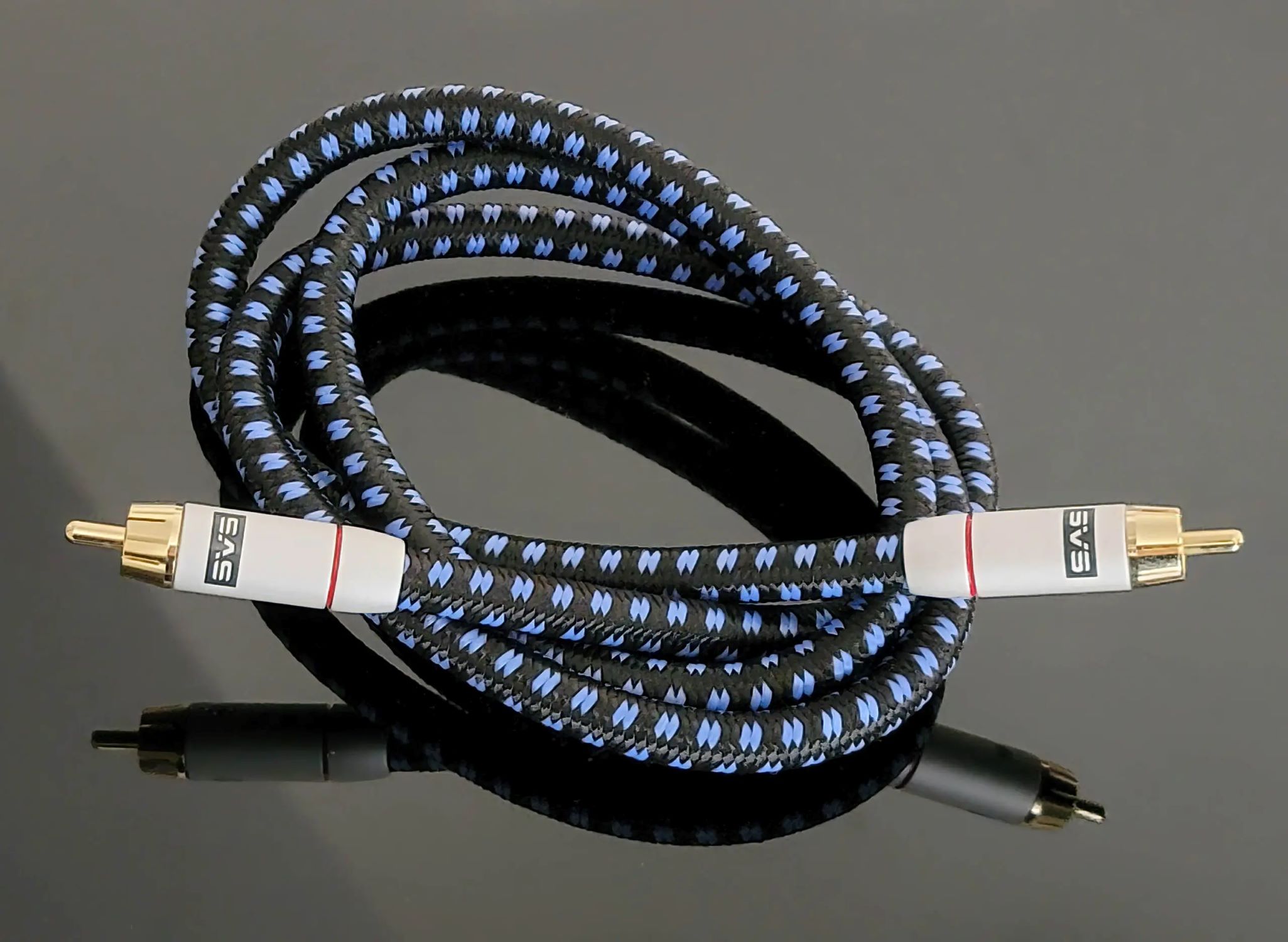

Subwoofer
What Is A Subwoofer Cable
Modified: January 22, 2024
Discover the essential details about subwoofer cables and why they are crucial for enhancing your audio experience. Learn about the key features and benefits of subwoofer cables.
(Many of the links in this article redirect to a specific reviewed product. Your purchase of these products through affiliate links helps to generate commission for AudioLover.com, at no extra cost. Learn more)
Table of Contents
Introduction
Welcome to the world of audio enthusiasts, where every beat and bassline matters. If you’re someone who enjoys deep, rumbling bass in your audio system, then you’re in for a treat. Subwoofers are an essential component of any sound setup that can deliver those low-frequency sounds with precision and impact.
However, to fully experience the power and depth of a subwoofer, you need more than just the speaker itself. This is where subwoofer cables come into play. These specialized cables are designed to transmit the audio signal from your audio source to the subwoofer, ensuring clear and accurate representation of the low-frequency sounds.
In this article, we’ll explore the world of subwoofer cables, from their basic functionality to the different types available in the market. We’ll also cover essential tips for choosing the right subwoofer cable and how to properly install and set them up in your audio system. So, let’s dive in and unravel the mysteries of subwoofer cables.
What is a Subwoofer Cable?
A subwoofer cable, also known as an RCA cable or a coaxial cable, is a specialized audio cable designed to transmit low-frequency audio signals from the audio source to a subwoofer. It is an essential component in any sound system setup that includes a subwoofer, as it ensures accurate and reliable delivery of deep bass frequencies.
Subwoofer cables are typically constructed with high-quality materials and shielding to minimize interference and maintain signal integrity. They feature a male RCA connector on each end, which is commonly color-coded for easy identification. The red RCA connector is used for the right channel, while the white or black connector is used for the left channel. These connectors are plugged into the corresponding input/output jacks on the subwoofer and the audio source.
The main purpose of a subwoofer cable is to transmit the low-frequency signals produced by the audio source, such as a receiver, amplifier, or soundbar, to the subwoofer. These signals carry the deep bass information in an audio track, allowing the subwoofer to reproduce powerful and impactful low-end sounds.
Compared to standard audio cables, such as speaker wires, subwoofer cables are specifically designed to handle the low-frequency signals without signal loss or degradation. They have a thicker gauge (typically 75-ohm impedance) and better shielding to prevent any interference or noise from affecting the signal quality.
In summary, a subwoofer cable is a specialized audio cable that connects the audio source to a subwoofer, allowing for the precise and accurate transmission of low-frequency audio signals. Its purpose is to deliver a clean and powerful bass audio experience, enhancing the overall sound quality of your audio system.
Features and Functionality
Subwoofer cables come with a range of features that are designed to optimize the audio signal transmission and enhance the overall performance of your subwoofer. Let’s take a closer look at some of the key features and functionalities to consider when choosing a subwoofer cable:
1. High-Quality Construction: A good-quality subwoofer cable will have durable construction with high-grade materials. Look for cables with solid metal connectors and thick, shielded cables to ensure maximum signal transfer and protection against interference.
2. Gold-Plated Connectors: Many subwoofer cables feature gold-plated connectors. Gold is an excellent conductor and provides a corrosion-resistant connection, resulting in improved conductivity and longevity.
3. Shielding: Shielding is crucial in subwoofer cables to minimize electromagnetic interference (EMI) and radio frequency interference (RFI). Look for cables with multiple layers of shielding, such as braided copper or foil, to ensure a clean and interference-free audio signal.
4. Length: Consider the length of the subwoofer cable you need for your setup. Measure the distance between your audio source and the subwoofer and choose a cable that is long enough to reach comfortably without excessive slack.
5. Low Signal Loss: Look for subwoofer cables with low attenuation ratings or low signal loss. The lower the signal loss, the more accurate the audio signal will be, resulting in cleaner and more impactful bass reproduction.
6. Flexibility: Flexibility is essential for easy installation and cable management. Consider cables that are flexible and easy to maneuver around tight spaces or behind furniture.
7. Compatibility: Ensure that the subwoofer cable you choose is compatible with the audio source and subwoofer you are using. Most subwoofers and audio sources have RCA or coaxial inputs/outputs, but it’s always a good idea to double-check the compatibility to avoid any connection issues.
8. Brand Reputation: Consider purchasing subwoofer cables from reputable and well-known brands. Brands with a good reputation in the audio industry are more likely to provide high-quality cables that will deliver consistent and reliable performance.
Overall, the features and functionality of a subwoofer cable are crucial in ensuring optimal audio signal transmission and maximizing the performance of your subwoofer. By considering these features and choosing a high-quality cable, you can enjoy clear, impactful, and immersive bass in your audio system.
Types of Subwoofer Cables
When it comes to subwoofer cables, there are a few different types available, each offering distinct characteristics and features. Let’s explore the most common types:
1. RCA Subwoofer Cables: RCA cables are the most widely used type of subwoofer cables. They have a distinctive red and white (or black) connector design. The red connector carries the right audio channel, while the white or black connector carries the left audio channel. RCA cables are versatile and suitable for most subwoofer and audio source connections.
2. Coaxial Subwoofer Cables: Coaxial cables, often referred to as digital audio cables, are another type of subwoofer cable. They have a single connector at each end, commonly an RCA or a digital coaxial connector. Coaxial cables are capable of carrying both analog and digital audio signals, making them a versatile option for subwoofer connections.
3. XLR Subwoofer Cables: XLR cables are predominantly used in professional audio setups. They feature three pins and are known for their balanced audio transmission, which helps minimize interference and improve signal quality. While less common in consumer audio systems, XLR subwoofer cables are favored by audio professionals and enthusiasts for their robustness and noise-rejecting capabilities.
4. Wireless Subwoofer Kits: Wireless subwoofer kits offer a cable-free solution by transmitting the audio signal wirelessly from the audio source to the subwoofer. These kits typically consist of a wireless transmitter that connects to the audio source and a wireless receiver that connects to the subwoofer. They can be a convenient option for eliminating cable clutter, especially in situations where running cables across the room may not be feasible.
5. Subwoofer Banana Plugs: While not technically a type of subwoofer cable, subwoofer banana plugs are worth mentioning. These are connector plugs that can be attached to the bare wire ends of a subwoofer cable, providing an easy-to-use and secure connection to compatible subwoofer and audio source terminals.
It’s important to consider your specific audio setup and the compatibility of your subwoofer and audio source when choosing the type of subwoofer cable. While RCA cables are the most common and versatile, other types may be preferred for specific applications or professional-grade audio systems. Assess your needs and preferences to determine the most suitable type of subwoofer cable for your setup.
Common Terminology
Understanding the common terminology associated with subwoofer cables can help you make informed decisions when selecting and using them. Let’s explore some of the key terms you may come across:
1. Impedance: Impedance refers to the opposition that an electrical circuit presents to the flow of alternating current (AC). Subwoofer cables typically have an impedance of 75 ohms, which helps ensure optimal signal transfer and compatibility with audio equipment.
2. Shielding: Shielding refers to the protective layer or layers around a cable that helps minimize electromagnetic and radio frequency interference. Common types of shielding in subwoofer cables include braided copper and foil shielding.
3. Signal Loss: Signal loss refers to the decrease or degradation of the audio signal strength as it travels through the subwoofer cable. Choosing a subwoofer cable with low signal loss results in a cleaner and more accurate bass reproduction.
4. AWG (American Wire Gauge): AWG is a standard measurement system used to determine the diameter of electrical wire. In the context of subwoofer cables, a lower AWG indicates a thicker and heavier gauge cable, which typically results in better signal transmission and reduced signal loss.
5. Connector Type: The connector type refers to the specific design of the connector at the end of the subwoofer cable. The most common connector types are RCA, coaxial, and XLR connectors.
6. Gold-Plated Connectors: Gold-plated connectors are connectors coated with a thin layer of gold. Gold is an excellent conductor and provides a corrosion-resistant connection, ensuring maximum signal transfer and longevity.
7. Bass Management: Bass management is a feature found in many audio systems that helps distribute the low-frequency sound signals to the appropriate speakers, including the subwoofer. It ensures a balanced and optimized audio experience across the speakers in a sound system.
8. Subwoofer Out: Subwoofer Out is an output jack on audio equipment, such as receivers or amplifiers, specifically designed to connect to a subwoofer. It allows the audio signal to be sent directly to the subwoofer for bass reproduction.
By familiarizing yourself with these common terminology used in the context of subwoofer cables, you can make more informed decisions when selecting cables and better understand their features and functionalities.
Choosing the Right Subwoofer Cable
Choosing the right subwoofer cable is crucial to ensuring optimal audio performance and hassle-free connectivity. Here are some key factors to consider when selecting a subwoofer cable:
1. Cable Length: Measure the distance between your audio source and the subwoofer to determine the appropriate cable length. It’s advisable to choose a cable that allows for some flexibility and avoids excessive cable slack.
2. Cable Quality: Invest in a high-quality subwoofer cable constructed with durable materials and good shielding. Look for thick cables with multiple layers of shielding to minimize interference and signal degradation.
3. Connector Type: Ensure that the connector type on the cable matches the input/output jacks on your subwoofer and audio source. The most common connector type is RCA, but check the specifications or user manual of your devices to confirm compatibility.
4. Impedance: Consider the impedance rating of the subwoofer cable. Most subwoofer cables have an impedance of 75 ohms, which offers optimal signal transfer. Matching the impedance of the cable to the audio equipment helps to avoid any signal loss or distortion.
5. Signal Loss Rating: Look for subwoofer cables with low signal loss ratings. This ensures that the audio signal remains strong and clear throughout the cable, resulting in accurate and impactful bass reproduction.
6. Budget: When selecting a subwoofer cable, consider your budget. While higher-end cables may offer better build quality and performance, there are also affordable options available that can deliver satisfactory results. Evaluate your needs and choose a cable that offers the best balance of quality and affordability for your setup.
7. Brand Reputation: Consider purchasing subwoofer cables from reputable brands known for their quality and reliability. Research customer reviews and ratings to get an idea of the performance and durability of the cables offered by different brands.
8. Personal Preference: Ultimately, trust your ears and personal preferences. If possible, audition different cables to see if there are noticeable differences in sound quality. What may sound great in one system may not necessarily translate to the same results in another, so trust your instincts and choose the cable that delivers the sound you desire.
By considering these factors, you can select a subwoofer cable that meets your specific needs and ensures optimal audio performance, allowing you to enjoy deep, powerful bass in your audio system.
Installation and Set-Up
Installing and setting up a subwoofer cable correctly is essential to achieving optimal audio performance. Follow these steps to ensure a smooth and successful installation:
1. Identify the Subwoofer Input: Locate the subwoofer input on your subwoofer. It is usually labeled as “SUB IN” or “LFE IN” (Low-Frequency Effects).
2. Locate the Audio Source Output: Find the corresponding audio output on your audio source, such as a receiver or amplifier. It is often labeled as “SUB OUT” or “LFE OUT”.
3. Ensure Power Off: Before connecting any cables, make sure your audio system and subwoofer are turned off to avoid any potential electrical damage to the equipment.
4. Connect the Subwoofer Cable: Take one end of the subwoofer cable and plug it into the subwoofer input. Ensure a snug and secure connection.
5. Connect the Audio Source: Take the other end of the subwoofer cable and plug it into the audio source’s subwoofer output. Again, ensure a secure connection.
6. Power On: Turn on your audio system and subwoofer. Check the connections to ensure they are properly secured and aligned.
7. Adjust Subwoofer Settings: Access the settings menu on your audio source, such as the receiver or amplifier, and navigate to the subwoofer settings. Adjust the level, crossover frequency, and other settings to match your preferences and optimize the bass performance of your system.
8. Test and Fine-Tune: Play some audio content with prominent low-frequency sounds to test the subwoofer’s performance. Listen and make any necessary adjustments to the subwoofer and audio source settings until you achieve the desired balance and impact in the bass response.
9. Cable Management: Properly manage and route the subwoofer cable to minimize cable clutter and potential tripping hazards. Use cable clips or sleeves to secure and organize the cable along walls, baseboards, or furniture if needed.
Remember to refer to the user manuals of your specific audio equipment and subwoofer for any additional instructions or recommendations regarding installation and set-up.
By following these steps and ensuring a proper installation, you can enjoy the full potential of your subwoofer and experience deep, rich bass in your audio system.
Tips for Maintaining Subwoofer Cables
Maintaining your subwoofer cables is important to ensure optimal performance and longevity. Here are some valuable tips to keep your subwoofer cables in excellent condition:
1. Proper Storage: When not in use, coil and store your subwoofer cables neatly. Avoid tightly winding or bending the cables excessively, as this can cause damage to the internal wiring and connectors. Use cable ties or Velcro straps to keep them organized and prevent tangles.
2. Avoid Sharp Bends and Pinching: Be careful when routing and positioning your subwoofer cables. Avoid sharp bends or kinks, as these can weaken the cable and lead to signal degradation. Additionally, make sure not to pinch the cable between heavy objects or furniture, which can cause damage to the insulation.
3. Protect Connectors: The connectors at the ends of the subwoofer cables are susceptible to damage and corrosion. Avoid forcefully inserting or removing connectors from the jacks to prevent undue stress on the connectors. Consider using dust caps or protective covers when the cables are not in use to prevent dust and debris from entering the connectors.
4. Regularly Inspect for Damage: Periodically inspect your subwoofer cables for any signs of damage, such as frayed wires, loose connectors, or cuts in the insulation. If you notice any issues, replace or repair the cable as necessary to prevent any further damage to your audio system.
5. Keep Cables Away from Heat Sources: Heat can damage the cable insulation and affect the overall performance of the subwoofer cable. Avoid placing the cables near heat sources like radiators, amplifiers, or other equipment that generates heat. Keep them away from direct sunlight as well, as exposure to UV rays can degrade the cable’s integrity.
6. Clean Connections: Over time, dust and dirt can accumulate on the connectors, potentially affecting the audio signal. Periodically clean the connectors using a soft cloth or a contact cleaner designed for electronics. Make sure the connectors are dry before plugging them back in.
7. Use Cable Management Solutions: Cable clips, wire channels, or cable sleeves can help keep your subwoofer cables organized and protected. These solutions can also minimize the risk of tripping over loose cables and reduce any strain on the cable’s connectors.
8. Handle with Care: When moving or disconnecting your audio equipment, handle the subwoofer cables with care. Avoid pulling or tugging on the cables if they are stuck or caught on any obstacles. Gentle handling will help maintain the integrity of the cables and connectors.
By following these maintenance tips, you can extend the lifespan of your subwoofer cables and ensure consistent and reliable performance in your audio system.
Frequently Asked Questions (FAQs)
Here are some commonly asked questions about subwoofer cables:
Q: Can I use any cable as a subwoofer cable?
A: While it is possible to use regular audio cables as subwoofer cables in some cases, it is recommended to use dedicated subwoofer cables. Subwoofer cables are designed specifically to handle low-frequency signals and are constructed with better shielding to minimize interference.
Q: How do I know which connector type to use for my subwoofer cable?
A: The connector type you need depends on the audio source and subwoofer you are using. RCA connectors are the most common and versatile. Check the input/output jacks on your subwoofer and audio source to determine the appropriate connector type.
Q: How long can a subwoofer cable be before I experience signal loss?
A: The length of the subwoofer cable can influence the potential for signal loss. However, for most average home audio setups, signal loss is not a significant concern until cable lengths exceed 50-100 feet. If you require longer cable runs, consider using a high-quality cable with low signal loss or using a signal amplifier.
Q: Can I use wireless subwoofer kits instead of subwoofer cables?
A: Wireless subwoofer kits offer a cable-free solution, allowing you to connect your audio source to the subwoofer wirelessly. They can be a convenient option when running cables across the room is not feasible. However, keep in mind that wireless kits may introduce a slight delay or latency in the audio signal.
Q: Should I invest in expensive subwoofer cables?
A: The price of subwoofer cables can vary greatly, and the perceived benefits of more expensive cables can be subjective. While higher-end cables may offer better build quality and performance, you don’t necessarily need to break the bank. A well-made, mid-range subwoofer cable can provide excellent audio performance in most home audio setups.
Q: How often should I replace my subwoofer cable?
A: Subwoofer cables, when properly maintained, can last for many years. However, if you notice any signs of damage, such as fraying or cuts in the insulation, it’s a good idea to replace the cable to avoid any further issues or signal degradation.
These FAQs should address some of the common concerns and questions about subwoofer cables. If you still have specific inquiries, it’s always recommended to consult the manufacturer’s guidelines or seek assistance from an audio professional.
Conclusion
Subwoofer cables play a crucial role in delivering deep, powerful bass in your audio system. Whether you’re a music lover, a movie enthusiast, or a gaming enthusiast, a high-quality subwoofer cable can enhance your audio experience and bring your entertainment to life.
In this article, we explored the world of subwoofer cables, from understanding their functionality and different types available, to tips for choosing the right cable and properly installing it in your setup. We also discussed maintenance tips to keep your subwoofer cables in excellent condition for long-lasting performance.
Remember, when selecting a subwoofer cable, consider factors such as cable length, quality, connector type, and impedance. Make sure to handle the cables with care, avoiding sharp bends and regularly inspecting for any signs of damage. With proper installation and maintenance, you can enjoy the full potential of your subwoofer and immerse yourself in the deep, rumbling bass of your audio system.
Whether you’re listening to music, watching movies, or playing games, the right subwoofer cable ensures that you feel every beat and impact. So, take your time to research and choose a subwoofer cable that meets your needs, budget, and performance expectations.
By implementing the knowledge gained from this article, you can optimize your audio system’s bass reproduction and elevate your audio experience to new heights. So go ahead, connect that subwoofer cable, and let the deep, immersive bass transform the way you listen to and enjoy sound.

